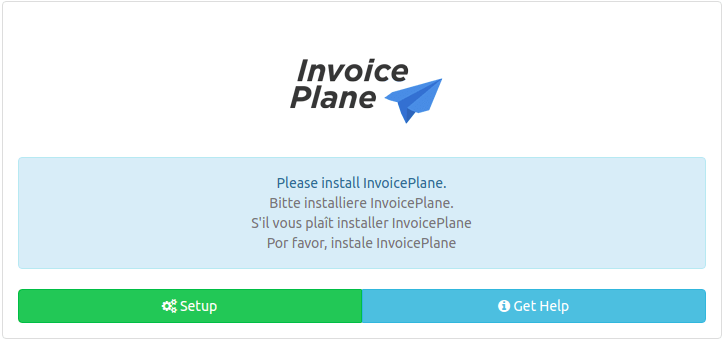How To Install InvoicePlane on Ubuntu 24.04 LTS

InvoicePlane is a free, open-source invoicing and billing software that has gained popularity among freelancers and small to medium-sized businesses. Its user-friendly interface, coupled with features like client management, quote generation, invoice creation, and payment tracking, makes it an invaluable tool for financial management.
This article aims to provide a comprehensive, step-by-step guide to installing InvoicePlane on Ubuntu 24.04. By following these instructions, you’ll be able to set up a fully functional invoicing system on your Ubuntu server, enabling you to streamline your billing processes and improve your business efficiency.
Prerequisites
Before we dive into the installation process, let’s ensure you have everything needed to successfully set up InvoicePlane on your Ubuntu 24.04 server.
System Requirements
To run InvoicePlane smoothly, your server should meet the following minimum specifications:
- Ubuntu 24.04 LTS (Long Term Support) installed
- 1 GB of RAM (2 GB recommended for optimal performance)
- 10 GB of free disk space
- A stable internet connection
User Requirements
You’ll need a non-root user account with sudo privileges. This approach enhances security by avoiding the use of the root account for day-to-day tasks.
Domain Name Setup
A valid domain name pointing to your server’s IP address is essential. This allows you to access InvoicePlane through a user-friendly URL rather than an IP address. If you haven’t set up a domain name yet, consider registering one through a domain registrar and configuring its DNS settings to point to your server’s IP address.
Software Requirements
InvoicePlane relies on the LAMP stack (Linux, Apache, MySQL/MariaDB, PHP). We’ll install these components as part of the setup process.
Step 1: Update the System
Before installing any new software, it’s crucial to ensure your system is up-to-date. This step helps prevent compatibility issues and ensures you have the latest security patches.
Open your terminal and run the following commands:
sudo apt update && sudo apt upgrade -yThis command updates the package lists and upgrades all installed packages to their latest versions. The ‘-y’ flag automatically answers “yes” to any prompts, streamlining the process.
Step 2: Install Apache Web Server
Apache is one of the most popular web servers and will host your InvoicePlane application. To install Apache, execute:
sudo apt install apache2 -yAfter installation, verify that Apache is running:
sudo systemctl status apache2You should see output indicating that Apache is active and running.
Next, configure your firewall to allow HTTP and HTTPS traffic:
sudo ufw allow 'Apache Full'This command opens ports 80 (HTTP) and 443 (HTTPS) in your firewall, allowing web traffic to reach your server.
Step 3: Install PHP and Required Modules
InvoicePlane is built with PHP, so we need to install PHP and several necessary extensions. Run the following command:
sudo apt install php libapache2-mod-php php-mysql php-curl php-gd php-mbstring php-xml php-zip -yThis command installs PHP along with modules required by InvoicePlane, such as MySQL support, cURL, GD graphics library, multibyte string support, XML processing, and ZIP handling.
To verify the PHP installation, check its version:
php -vYou should see output displaying the installed PHP version.
Step 4: Install MySQL/MariaDB Database Server
InvoicePlane requires a database to store its data. We’ll use MySQL for this guide, but MariaDB is a compatible alternative.
Install MySQL server with:
sudo apt install mysql-server -yAfter installation, it’s crucial to secure your MySQL server. Run the security script:
sudo mysql_secure_installationFollow the prompts to set a root password, remove anonymous users, disallow root login remotely, and remove the test database.
Now, let’s create a database and user for InvoicePlane. Access the MySQL prompt:
sudo mysqlThen, execute the following SQL commands:
CREATE DATABASE invoiceplane;
CREATE USER 'invoiceplaneuser'@'localhost' IDENTIFIED BY 'securepassword';
GRANT ALL PRIVILEGES ON invoiceplane.* TO 'invoiceplaneuser'@'localhost';
FLUSH PRIVILEGES;
EXIT;Remember to replace ‘securepassword‘ with a strong, unique password of your choice.
Step 5: Download and Configure InvoicePlane
Now that we have our LAMP stack set up, let’s download and configure InvoicePlane.
Downloading InvoicePlane
First, navigate to your home directory and download the latest version of InvoicePlane:
cd ~
wget https://github.com/InvoicePlane/InvoicePlane/releases/download/v1.6.1/v1.6.1.zipExtracting Files
Unzip the downloaded file and move it to the web root directory:
sudo unzip v1.6.1.zip -d /var/www/html/
sudo mv /var/www/html/v1.6.1.zip /var/www/html/invoiceplaneConfiguring Permissions
Set the correct ownership and permissions for security:
sudo chown -R www-data:www-data /var/www/html/invoiceplane/
sudo chmod -R 755 /var/www/html/invoiceplane/Editing Configuration File
Rename the example configuration file and edit it with your database details:
sudo cp /var/www/html/invoiceplane/ipconfig.php.example /var/www/html/invoiceplane/ipconfig.php
sudo nano /var/www/html/invoiceplane/ipconfig.phpUpdate the database settings with the credentials you created earlier.
Step 6: Configure Apache Virtual Host
Creating a virtual host for InvoicePlane allows Apache to serve your application correctly.
Creating a Virtual Host File
Create a new configuration file:
sudo nano /etc/apache2/sites-available/invoiceplane.confAdding Configuration Details
Add the following content to the file, replacing ‘example.com’ with your domain name:
<VirtualHost *:80>
ServerName example.com
ServerAlias www.example.com
DocumentRoot /var/www/html/invoiceplane/public
<Directory /var/www/html/invoiceplane/public>
AllowOverride All
Require all granted
</Directory>
ErrorLog ${APACHE_LOG_DIR}/invoiceplane_error.log
CustomLog ${APACHE_LOG_DIR}/invoiceplane_access.log combined
</VirtualHost>Enabling the Site and Rewrite Module
Enable the new site configuration and the Apache rewrite module:
sudo a2ensite invoiceplane.conf
sudo a2enmod rewrite
sudo systemctl restart apache2Step 7: Complete Web-Based Installation
With all components in place, it’s time to complete the installation through InvoicePlane’s web interface.
Accessing the Installation Wizard
Open a web browser and navigate to your domain (e.g., http://example.com). You should see the InvoicePlane setup wizard.

Step-by-Step Wizard Instructions
1. Choose your preferred language for the installation process.
2. Enter the database credentials you configured earlier.
3. Set up your application settings, including your email address and admin account credentials.
4. Review the settings and complete the installation.
Step 8: Post Installation Tasks
After successfully installing InvoicePlane, there are a few important tasks to complete.
Securing Your Installation
Remove the setup directory to prevent unauthorized access:
sudo rm -rf /var/www/html/invoiceplane/setup/Enabling HTTPS with Let’s Encrypt SSL Certificate (Optional)
For enhanced security, consider setting up HTTPS:
sudo apt install certbot python3-certbot-apache -y
sudo certbot --apache -d example.com -d www.example.comFollow the prompts to obtain and configure your SSL certificate.
Testing Installation
Log in to your InvoicePlane dashboard using the admin credentials you set during the web-based installation. Verify that you can access all features and that everything is functioning correctly.
Troubleshooting Common Issues
Despite careful installation, you might encounter some issues. Here are solutions to common problems:
1. Permission errors: If you encounter “Permission denied” errors, double-check the ownership and permissions of your InvoicePlane directory:
sudo chown -R www-data:www-data /var/www/html/invoiceplane/
sudo chmod -R 755 /var/www/html/invoiceplane/2. Database connection issues: Ensure that the database credentials in your ‘ipconfig.php’ file are correct. You can test the connection manually using:
mysql -u invoiceplaneuser -p invoiceplane3. Apache misconfiguration: If you’re seeing a “404 Not Found” error, check your virtual host configuration file for typos or incorrect paths.
4. PHP module missing: If InvoicePlane complains about a missing PHP module, install it using:
sudo apt install php-[module_name]Replace [module_name] with the required module (e.g., php-gd).
Congratulations! You have successfully installed InvoicePlane. Thanks for using this tutorial for installing the InvoicePlane on Ubuntu 24.04 LTS system. For additional help or useful information, we recommend you check the official InvoicePlane website.